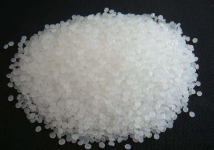read: 1057 time:2025-07-03 11:56:06 from:化易天下
In the world of organic chemistry, understanding the basicity of different compounds is crucial. Among these compounds, pyridine and aliphatic amines are frequently compared due to their similar nitrogen-containing structures. However, a common question that arises is: Why is pyridine less basic than aliphatic amines? This article will delve into the molecular and electronic factors contributing to this difference in basicity.
Pyridine is an aromatic heterocycle with a nitrogen atom incorporated into a six-membered ring. In contrast, aliphatic amines feature a nitrogen atom connected to alkyl groups but without any involvement in a conjugated ring system. The structural difference between these two types of compounds significantly influences their electronic properties, which, in turn, affects their basicity.
The key reason why pyridine is less basic than aliphatic amines lies in the concept of electron delocalization. In pyridine, the lone pair of electrons on the nitrogen atom is partially delocalized into the aromatic ring. This delocalization reduces the availability of the lone pair for protonation, thereby decreasing the basicity of pyridine.
In contrast, aliphatic amines do not have such delocalization of their nitrogen lone pair. The electrons are more localized and, therefore, more readily available to accept a proton. This difference in electron availability directly correlates with the higher basicity of aliphatic amines compared to pyridine.
Another factor contributing to why pyridine is less basic than aliphatic amines is the hybridization state of the nitrogen atom. In pyridine, the nitrogen atom is sp2 hybridized due to its involvement in the aromatic ring structure. This sp2 hybridization means that the lone pair of electrons resides in an sp2 orbital, which is closer to the nucleus and, therefore, less available for protonation.
On the other hand, in aliphatic amines, the nitrogen is sp3 hybridized. The sp3 hybridized orbital is further from the nucleus, making the lone pair more available for interaction with protons. This increased availability further explains the higher basicity of aliphatic amines compared to pyridine.
Resonance also plays a pivotal role in understanding why pyridine is less basic than aliphatic amines. The aromatic stability of pyridine relies partly on the delocalization of electrons, including the lone pair on the nitrogen. If pyridine were to accept a proton, this would disrupt the aromaticity, leading to a less stable structure. As a result, pyridine is less inclined to act as a base.
Aliphatic amines, however, do not face this stability trade-off. The absence of aromaticity means that protonation does not lead to a significant loss of stability, allowing aliphatic amines to exhibit stronger basicity.
In summary, the lower basicity of pyridine compared to aliphatic amines can be attributed to a combination of factors including electron delocalization, hybridization, and resonance effects. The lone pair on the nitrogen atom in pyridine is less available for protonation due to its involvement in the aromatic ring and its sp2 hybridized state. Additionally, the desire to maintain aromaticity further reduces pyridine's basicity. Conversely, aliphatic amines, with their sp3 hybridized nitrogen and lack of electron delocalization, are more basic as their nitrogen lone pair is more available to accept protons. Understanding these differences provides a deeper insight into why pyridine is less basic than aliphatic amines, a key consideration in organic chemistry and related fields.

Jincheng Petrochemical's 300000 ton polypropylene plant successfully trial production, 2024 polypropylene market analysis

The ABS market remains sluggish, what is the future direction?

Market differentiation of bisphenol A intensifies: prices rise in East China, while prices generally decline in other regions

The production method and process flow of silicone acrylic lotion, and what are the common raw materials